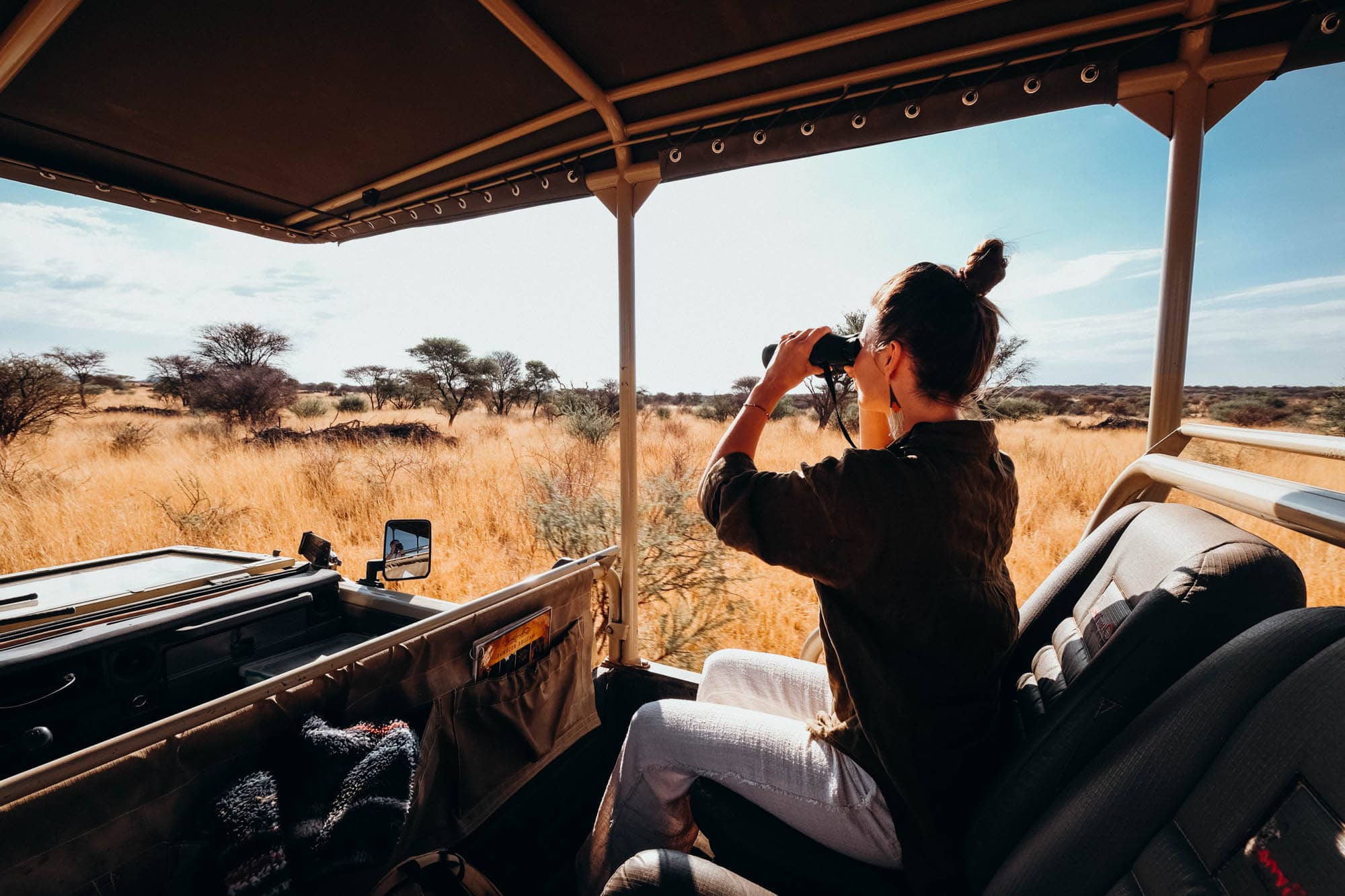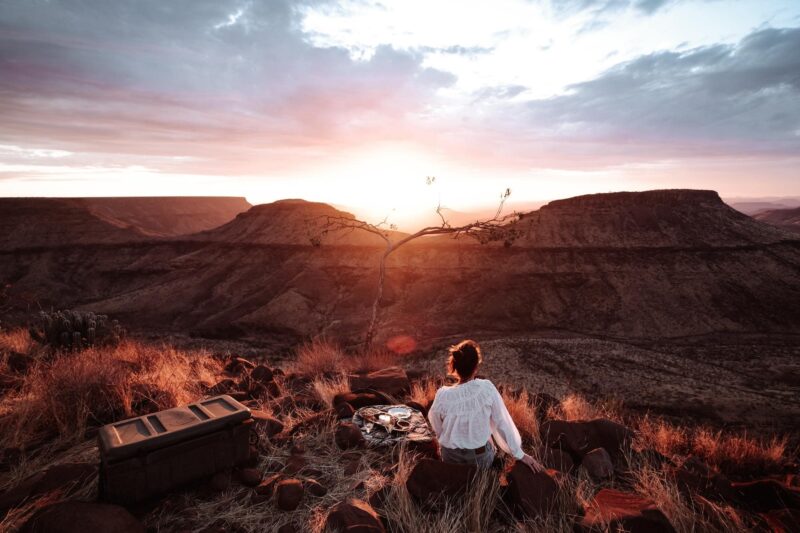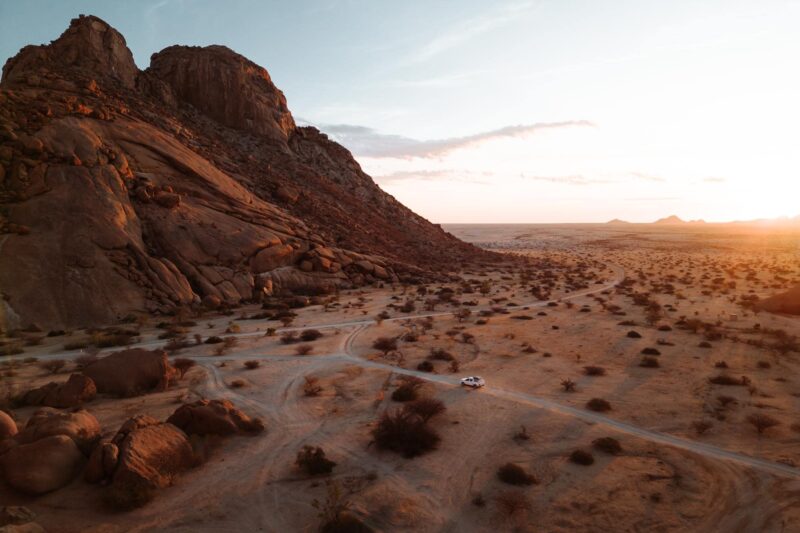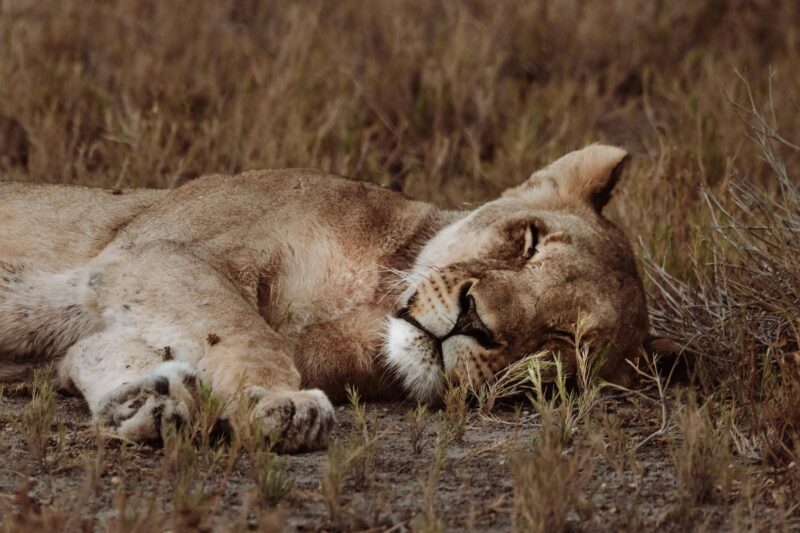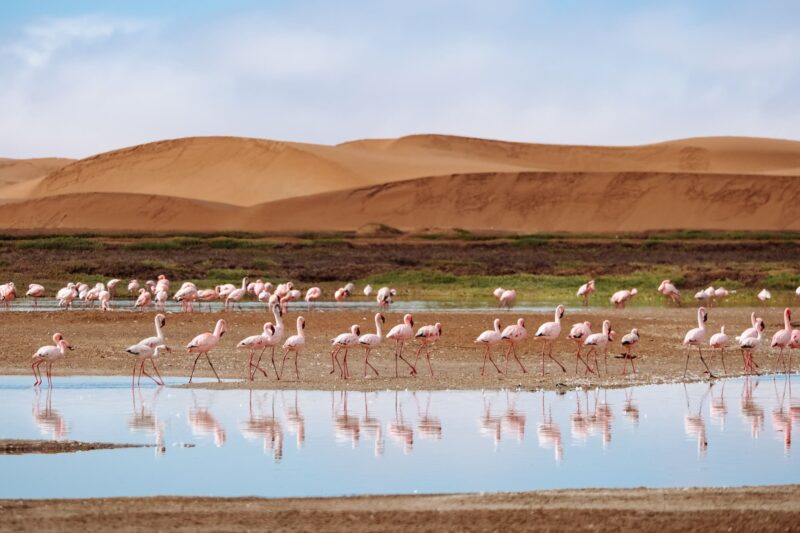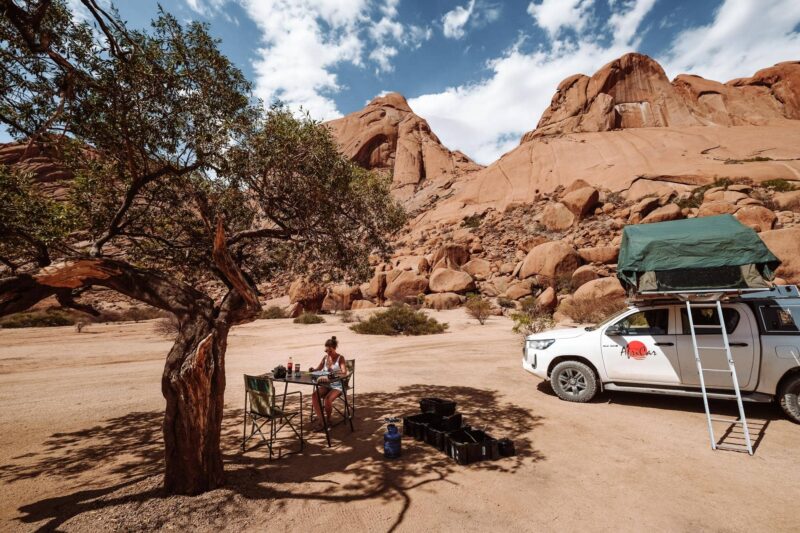Okonjima Nature Reserve is a stunning natural park situated halfway between Windhoek and Etosha National Park. Unlike Etosha, you’ll encounter very few other travelers in Okonjima Nature Reserve. Not only are the wild animals abundant here, but the scenery is also breathtakingly beautiful. Grasses and trees cover the reddish-orange ground, forming a hilly landscape that serves as the habitat for many unique animals. Okonjima Nature Reserve has a remarkable history, and by visiting this park, you also support a good cause. Below, you’ll find information on how the park originated, what activities are available, and many more tips for visiting Okonjima Nature Reserve.
The Origin of Okonjima Nature Reserve
Okonjima Nature Reserve spans an area of 22,000 hectares and has been owned by the Hanssens family for generations. Initially, this family started as livestock farmers here several decades ago, but they are now dedicated to wildlife conservation. Their goal is to restore Okonjima to its natural state before it was cultivated by humans around 200 years ago. In 1993, they founded the AfriCat Foundation, which focuses on rescuing, rehabilitating, and releasing large carnivores such as leopards and cheetahs. By visiting Okonjima Nature Reserve, you support this noble initiative.
Visiting Okonjima Nature Reserve: The Various Options
You can only visit Okonjima Nature Reserve with a guide. There are several passionate and experienced guides who know the park like the back of their hand. There are different activities to choose from, and below, you’ll learn about all of them.
Leopard Tracking
Some adult leopards that have been rescued in Okonjima Nature Reserve wear collars with trackers. This is for both scientific research and to ensure they don’t leave the park. When they do, they often attack livestock belonging to neighboring farmers, causing significant problems. During a leopard tracking excursion, you’ll drive through the nature reserve with the special tracker. If the leopard is within a radius of 2 kilometers (1.2 miles) , the tracker will beep. Our guide mentioned that the chance of spotting leopards during a leopard tracking excursion is 50/50.
![]()
Game Drive
We opted to join a game drive early in the morning. We hopped into an open 4×4 and ventured deep into the park as the sun rose. The guide shared a wealth of information about the park and all its inhabitants. He didn’t just focus on the big animals but also pointed out reptiles, insects, and birds. There have been sightings of up to 250 bird species in Okonjima Nature Reserve! Thanks to the rugged vehicle, we were able to go off-road, driving right through the bush.
Night Drive
Instead of during the day, you can also go on a game drive in the evening. Many animals are more active at night than during the day. You might encounter bat-eared foxes, aardwolves, cheetahs, and lions.
Off the Beaten Track Walk & Drive
This two-hour activity is particularly popular among families with young children. You’ll take a short walk where you’ll learn a lot about the flora and fauna. Then you’ll hop back into the car for a brief game drive.
Self-Guided Walk
You’re allowed to explore various walking trails in Okonjima Nature Park without a guide. You can get a map of these so-called Nature Trails at the reception. These walking routes are within the camp’s fences, so you won’t encounter large animals here.
Pangolin Tracking on Foot
Pangolins, also known as scaly anteaters, are incredibly unique animals. They’re mammals with scales. Unfortunately, pangolins have a grim record—they’re the most trafficked mammals in the world, making them severely endangered. In the last 10 years alone, about 1 million pangolins have been poached. Fortunately, they are well protected in Okonjima Nature Reserve. Pangolin tracking is carried out with great care. You’ll go into the park on foot with a guide and a small group. Pangolins are most active at night, so you’ll head out in the dark. You must be as quiet as possible and always maintain a safe distance if you spot a pangolin. There’s no guarantee that you’ll see them as they’re elusive creatures. That makes it extra special if you do get to admire them in their natural habitat!
Fun Fact: A pangolin eats up to 200,000 ants per day.
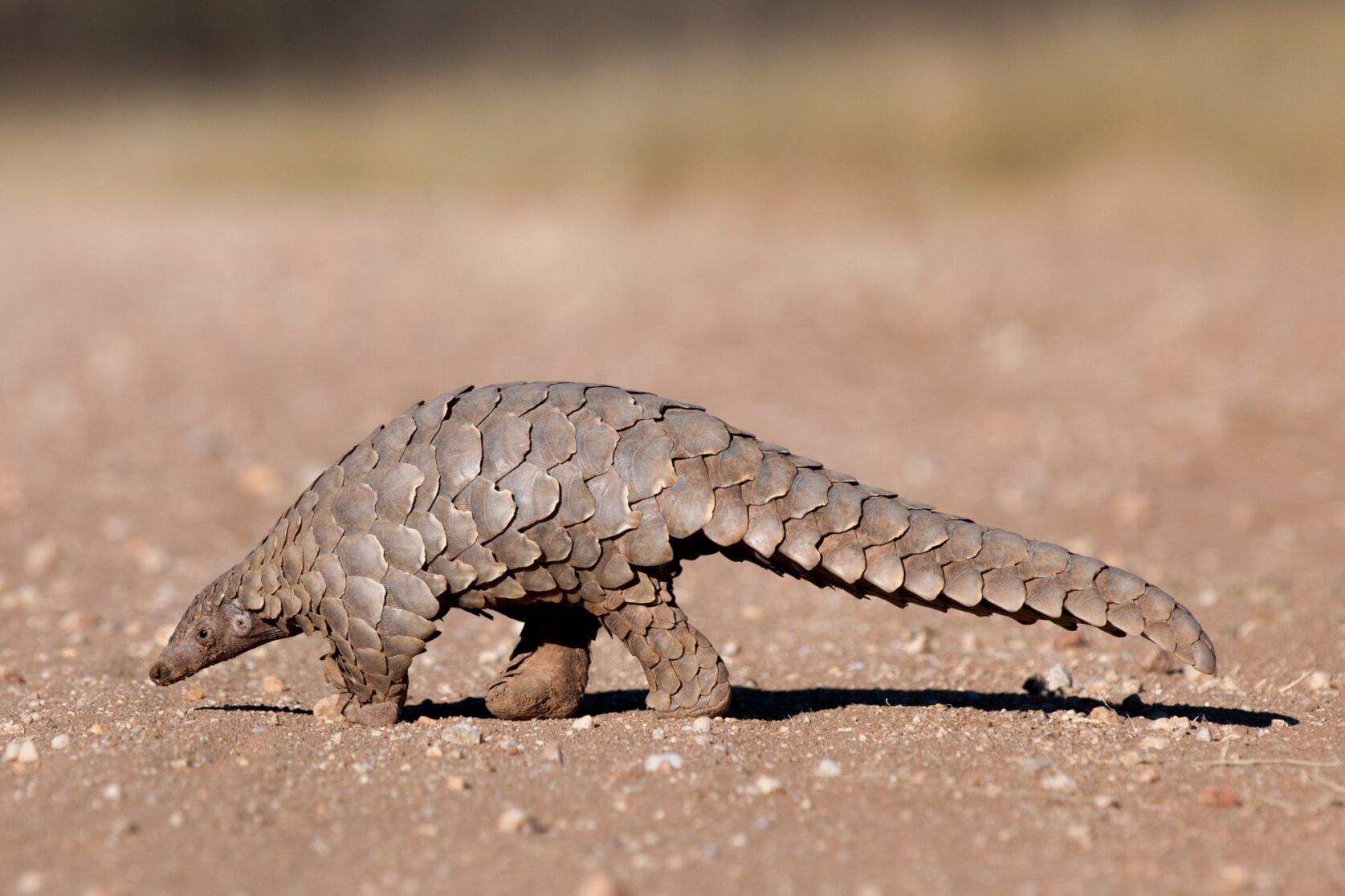
Rhino Tracking on Foot
If you’re more into large animals, instead of pangolins, you can also go in search of rhinos! With an experienced guide, you’ll venture on foot to find these magnificent creatures. Rhinos can weigh thousands of kilograms. It’s quite impressive that they can still run at speeds of around 55 km/h despite their heavy build. So, it can be quite thrilling to search for rhinos, but fortunately, the guides are very professional and know both the rhinos and the nature reserve very well, knowing exactly what they’re doing.
Good to Know: Unfortunately, rhinos are severely threatened. Many rhinos are illegally shot by poachers who sell their horns. In Asia, the horn is traded as medicine. Currently, there are only 27,000 rhinos left in the world. That’s about 70% less than 40 years ago. Strict enforcement is in place at Okonjima. Security patrols continuously roam the park to catch illegal poachers in the act. Our guide asked us not to post photos of rhinos on Instagram stories with Okonjima as the location. Poachers keep an eye on this, and then they know where the rhino has recently been.
Choosing Between a Game Drive or Leopard Tracking
Are you torn between a game drive and leopard tracking? We were too, and ultimately, we were happy with our decision to go for the game drive. During a game drive, you’re not only searching for leopards but also enjoying other animals in the nature reserve. The guides stay in communication, so if the leopard tracking group spots a leopard, your guide will still receive the location. During the game drive, we saw a leopard with her few months old baby. There was no one else around, and we took our time to observe them extensively. Additionally, we also saw multiple rhinos, African eagle owls, hornbills, zebras, and giraffes.
Camping in Okonjima Nature Reserve
The camping site in Okonjima Nature Reserve was one of the best campsites we stayed at in Namibia. You stay right in the heart of the nature reserve, and the camping spots are spaced far apart, providing lots of privacy. Each camping spot has electricity, a small kitchenette, barbecue area, toilet, and shower. There’s also a nice swimming pool if you want to relax after your safari. The camping area is fenced, so large animals like rhinos and lions can’t enter, but smaller animals can. One night, we heard a jackal making a lot of noise very close to our tent. Be sure to check out the reception on top of the hill. Here, you can enjoy some food or drinks while enjoying a breathtaking view over Okonjima Nature Reserve.
How Can You Book Your Stay and Activities?
We booked our trip with Namibia Nomads, and the Okonjima camping is included in the package. If you’re traveling without a tour operator, you can book your stay through okonjima.com. When checking in, you can specify which activities you’d like to do. Sometimes you can do this the same afternoon, but often it’s the next morning if you choose leopard tracking or a game drive.
